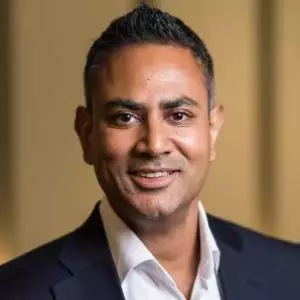Extreme heat, floods, droughts, rising sea levels, and other shifting climate patterns pose significant threats to the most vulnerable communities and populations—particularly in the developing world. These impacts, if not adequately addressed, put the Sustainable Development Goals further out of reach.
The World Bank warns that climate change could force 130 million more people into poverty within a decade. That creates major headwinds for achieving SDGs related to eliminating poverty (SDG #1) and promoting decent work and economic growth (SDG #8). Sensitive natural ecosystems, such as forests and wetlands, are also at risk of being upended by climate hazards—with direct implications for progress on protecting our environment (SDG #14 and SDG #15). A changing climate also makes it more difficult to end hunger (SDG #2), advance good health (SCG #3), and ensure access to clean water (SDG #6).
These dynamics make it clear that, if we are to reach the ambitious goals set out in the SDGs, we must prioritize and accelerate climate adaptation and resilience (A&R) efforts .
Protecting People, Economies and Nature
Climate hazards, combined with limited economic resources, leave communities in many parts of the world vulnerable to droughts, floods, and heat stress. Countries and communities in the developing world face the harshest impacts of climate change. In sub-Saharan Africa, a warming planet has the potential to increase hunger and food insecurity. In Southeast Asia, coastal cities and communities face increasing risk of severe storms, coastal flooding, and sea level rise that impact lives, economies, and trade. And in certain regions in India, like Bihar and Uttar Pradesh, increased climate risks such as heat waves lead to risks of water scarcity and crop failures.
A&R efforts that protect people, economies, and nature can mitigate these impacts. Consider the ongoing work in a major West African state that is home to more than 20 million people. The government there, with support from BCG, has evaluated the potential impact of climate hazards and the actions required to address them. The work revealed impacts to:
- Food. Loss of local crops could threaten food security, requiring importation of 78% of the region’s food.
- Health. Up to 400 health centers could be disrupted, affecting more than 2 million patients. In some scenarios, 20,000 people could suffer heat-related deaths—and almost one-third would be children.
- Education. Some 500 schools and education centers could be inundated, disrupting the learning process of more than 500,000 students.
- Natural Ecosystems. Up to 82% of the state’s undeveloped wetlands could face potential loss in biodiversity and ecosystem services by 2050.
In this case, smart and targeted A&R measures would cost about $10 billion while preventing $30 billion in economic damages—a return of 3x.
With insights such as this, the state is shaping an adaptation program with a portfolio of projects that yield the highest impact with limited resources. This includes coastal protection in the most vulnerable areas, wetland restoration, early warning systems, and urban cooling interventions with green spaces.
We believe there are similar potential benefits to A&R action in many other regions and countries. In locations such as Southeast Asia and South Asia, the cost of restoration and disaster response is several times more than the cost of prevention and protection. Simply put, the fallout from not investing in adaptation may make it two to three times harder for us to achieve the SDGs.
Power SDG Progress Through A&R
Decisions on A&R need to be based on the estimated socioeconomic return of those investments—meaning the expected benefits versus the true costs of inaction.
To make sound judgements about the socioeconomic ROI, decision makers must draw on climate science and granular data. They must also have access to financing and funding, innovation, and new technologies. Implementation of A&R plans must then be locally led and fit the local context. And the public sector, private sector, and local community groups must collaborate to implement A&R solutions that are fit for purpose and implemented where they are most needed. Such an approach can allocate scarce resources where they will do the most good.
We see encouraging examples of forward-looking governments taking this approach. An East African government developed impact modeling and a response strategy for drought, including identifying vulnerable populations affected and estimating the cost of inaction on poverty levels, hunger, public health, and access to water and sanitation. The insights were used to prioritize the investments needed, including in the food supply chain and insurance interventions for local farmers.
The right investments in adaptation and resilience can channel resources, funding, and technical capacity to where they are needed most.
Similarly, a country in Southeast Asia has conducted a climate-hazard risk assessment for a coastal region prone to flooding, extreme storms, and sea level rise. That assessment has helped the government identify the measures that will have the highest impact in protecting vulnerable people living in poverty near the coast—while also ensuring the stability of the local health care system, local industry and jobs, the agricultural sector, and natural ecosystems such as wetlands.
These examples underscore how the right investments in adaptation and resilience can channel resources, funding, and technical capacity to where they are needed most. If we make A&R a global priority, we can raise the odds of success in achieving the SDGs.







